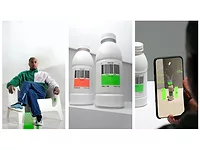Ingredient Spotlight
Hydrocolloids improve functional beverage formulation
Low-carb, low-sugar beverages benefit from hydrocolloids

Food and beverage manufacturers have long turned to hydrocolloids such as starch, xanthan gum, carrageenan, guar gum and pectin to control functional properties, help maintain safety and freshness, and improve nutritional value, taste, texture and appearance. A surge in ketogenic diets and sugar-reduction is impacting demand for hydrocolloids, which help improve mouthfeel and enhance the quality and functionality of low-sugar, low-carb beverages.
“Consumers have always gravitated toward diets that help [them] quickly lose weight, and the keto diet’s promotion of high-fat foods strong in flavor contributes to its wide popularity,” says Brendan Scott, food scientist in food systems at Westchester, Ill.-based Ingredion Inc. “In addition, now more than ever, consumers are monitoring the nutritional labels of products they purchase and are wary of the health effects of excess sugar in their diet.”
According to Selbyville, Del.-based Global Market Insights (GMI), consumer demand for flavorful, colorful, nutritious, safe and convenient foods and beverages is driving the market for food ingredients globally, with the hydrocolloids market encompassing nearly $8.5 billion in sales in 2019 at a compound annual growth rate (CAGR) of around 5 percent.
Ingredion’s Scott says trending ketogenic diets and sugar-reduction are influencing the application of certain hydrocolloids in beverages.
"Food and beverage products developed for the keto diet have high levels of fat and low levels of sugar, which can cause product-stability issues,” Scott explains. “Hydrocolloids’ inherent low usage rate will not negatively affect the carbohydrate content of the product, and will emulsify the high levels of fat, as well as build back functionality lost from removing a products’ sugar.”
Iliana Nava, senior technical service specialist for hydrocolloids at Minneapolis-based Cargill, notes that along with demand for fewer calories and carbohydrates, trends driving the hydrocolloids market include a desire for more “natural,” less-processed ingredients, and simpler labels.
“Product developers are looking for creative ways to combine gums to provide the functionality of the ingredients being removed from labels,” Nava says. “It has been a real boon for familiar ingredients like pectin, which is sourced from fruit peels, but for lesser-known ingredients, it has pushed product developers to shift to different ingredient combinations.”
A highly functional soluble fiber, pectin acts as a stabilizer in flavored milks and drinkable yogurts to provide enhanced mouthfeel, Nava says. In low-calorie or sugar-reduced beverages, pectin pairs well with plant-sourced stevia for a label-friendly formulation. Pectins also keep cocoa, protein and other ingredients in suspension, stabilize flavors and protect proteins from high heat and acidic juices; for example, protecting the proteins in dairy beverages from acidity.
However, there are formulation challenges to overcome when using pectin or other hydrocolloids in acidic pH beverages, she notes. .
“When using hydrocolloids in acidic pH beverages, the stability of hydrocolloids at low-pH range is critical to maintain expected viscosity during storage,” Nava explains. “Another challenge is providing appealing mouthfeel and great flavor release for the beverage. For example, both pectin and xanthan gum can resist low-pH conditions during storage, but xanthan gum provides a less-appealing mouthfeel.”
Ingredion’s Scott says that the main challenge in developing products containing hydrocolloids is balancing consumer preference with functionality.
“Not having the functionality that certain hydrocolloids provide in products can cause issues with stability and texture,” he says. “These challenges are being addressed through research in hydrocolloid interactions with other ingredients to help achieve different functionalities in specific product application areas.”
Clean-label trends also are driving success in the hydrocolloids market. Harneet Mehar, research analyst at GMI, says manufacturers are working to include protein sources and added nutrients that cater to consumer preferences for vegan, organic, non-GMO, fortified and free-from characteristics on food and beverages labels.
“Consumers are increasingly demanding clear, fragmented information about the ingredients used in food and beverage formulations,” she says. “Efficient marketing efforts by food industry leaders to provide a clear list of food ingredients used in food products and clean-label indication is paving the way for growth in the hydrocolloids market.”
Cargill’s Nava advises that by determining clear formulation targets and understanding labeling requirements, formulators can pinpoint which hydrocolloid provides the desired functionality, stability and sensory characteristics.
Suspended in motion
As demand for healthier, clean-label product formulation continues to have a positive impact on the hydrocolloids market, innovation in hydrocolloids’ application for beverages is likely to expand.
“Future advancements in this area likely will produce a larger array of hydrocolloid food ingredients, either from new and novel, untapped sources and agricultural byproduct streams, or from process modifications of existing products to render them more natural and environmentally friendly,” GMI’s Mehar says.
Additionally, Cargill’s Nava expects to see continued growth in ingredients such as pectin, gellan gum and locust bean gum, which deliver the mouthfeel, suspension and protein protection today’s beverage formulations require. At the same time, these hydrocolloids also meet consumers’ clean-label expectations.
“It’s a trend that has truly become mainstream,” Nava says. “Given that, I don’t think interest in label-friendly ingredients shows any sign of waning.”
Looking for a reprint of this article?
From high-res PDFs to custom plaques, order your copy today!







